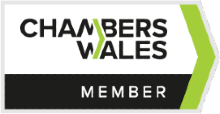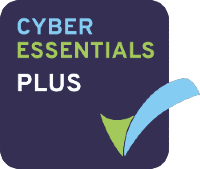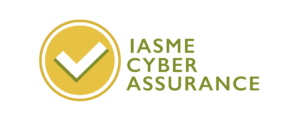Following the recent consultation on charity reporting, the Charity Commission has published the new Charities Statement of Recommended Practice (‘SORP’) for 2026. These changes introduce a revised framework that will significantly impact how charities present financial and narrative information.
In this blog, Michael Jones, Audit Partner at Bevan Buckland LLP, outlines the key updates introduced in SORP 2026, explains how the new tiered reporting structure will impact charities of different sizes, and discusses the practical steps organisations should take to ensure a smooth transition ahead of the January 2026 implementation date.
Why SORP Matters
The Statement of Recommended Practice (SORP) provides the framework for charity accounting and reporting in the UK. It ensures consistency, transparency, and accountability in how charities present their financial information. With increasing public scrutiny and evolving regulatory expectations, the 2026 update reflects a move towards more transparent and proportionate reporting across the sector.
On 31 October 2025, the Charity Commission, along with other UK charity regulators, published the final version of SORP 2026. This new standard will take effect for accounting periods that begin on or after 1 January 2026. While early adoption is allowed, charities should carefully evaluate their readiness before making the transition.
A copy of the new SORP can be found at https://charitysorp.org/download-a-full-sorp
Key Changes in SORP 2026
-
A Tiered Reporting Framework
SORP 2026 introduces a three-tier system based on a charity’s income:
- Tier 1: Income up to £500,000
- Tier 2: Income between £500,000 and £15 million
- Tier 3: Income over £15 million
This tiered approach is designed to make reporting more proportionate to a charity’s size and complexity. For example, only Tier 3 charities will be required to prepare a full cash flow statement, easing the burden on smaller organisations.
-
Lease Accounting
Charities will now need to account for most operating leases on their balance sheets. This change aligns with updates to FRS 102 and international accounting standards and will increase transparency around leased assets and liabilities. Further guidance covering small/peppercorn or of nominal value is also given in the SORP.
-
Revenue Recognition
SORP 2026 introduces a new five-step model for recognising income from exchange transactions. This will affect how charities report income from contracts and services, ensuring consistency with broader financial reporting standards and improving comparability across the sector. The SORP now includes specific examples to assist charities in applying these new requirements.
The five-step model is set out as follows:
- Identifying a contract.
- Identify the performance obligations under the contract.
- Determine the transaction price.
- Allocate the transaction price to the performance obligations.
- Recognise the appropriate level of income as or when the charity satisfies each obligation.
Charities also need to consider whether performance obligations are satisfied over a period of time (for example, the delivery of training sessions) or at a point in time (such as the transfer of a specific asset or service).
Charities must select a method for measuring performance against the obligations and apply it consistently across income streams with similar obligations. Charities must also remeasure progress against the obligations at the end of each reporting period and make any needed adjustments to the estimates used.
-
Trustees’ Annual Reports
The narrative section of charity accounts is being refreshed to provide more meaningful insights. Trustees’ annual reports will now include:
- Enhanced disclosures on financial reserves and future plans.
- New sections on impact reporting, environmental, social, and governance (ESG) issues, and social investments.
These additions aim to give stakeholders a clearer understanding of a charity’s mission, performance, and long-term sustainability.
The table below notes the SORP paragraphs relevant to each tier.
| Section | Tier 1 | Tier 2 | Tier 3 |
| Objectives and activities | 1.20 to 1.23 | 1.20 to 1.27 | 1.20 to 1.27 |
| Achievements and performance | 1.28 | 1.28 to 1.33 | 1.28 to 1.34 |
| Financial review | 1.35 to 1.43 | 1.35 to 1.46 | 1.35 to 1.47 |
| Plans for future periods | 1.48 | 1.48 to 1.50 | 1.48 to 1.50 |
| Structure, governance and management | 1.51 to 1.52 | 1.51 to 1.55 | 1.51 to 1.55 |
| Reference and administrative details | 1.56 to 1.57 | 1.56 to 1.57 | 1.56 to 1.59 |
| Sustainability | 1.60 | 1.60 | 1.60 to 1.65 |
-
Simplification for Smaller Charities
Smaller charities will benefit from several simplifications:
- No requirement to prepare a cash flow statement for charities with income under £15 million
- Easier-to-understand provisions and contingencies reporting.
- The Department for Culture, Media and Sport (DCMS) has also announced that the threshold for accrual accounts will rise from £250,000 to £500,000. This change could allow over 5,000 charities to opt for simpler receipts and payments accounts, reducing administrative burdens.
- Statement of financial activities (SFA):the updated SORP retained the option for smaller charities to choose between activity-based or natural classification methods to present their SoFA. It has also given more guidance on how the reporting on a natural classification basis could look, promoting consistency between smaller charities that choose this approach.
Implementation Timeline
- March 2025: Consultation opened
- October 2025: Final SORP published
- 1 January 2026: SORP 2026 becomes effective
Charities can choose to adopt the new SORP early, but it’s important to assess readiness and consult with your auditors or advisors before making that decision.
What Should Charities Do Now?
With the effective date fast approaching, charities should begin reviewing their current reporting practices and assessing how the new SORP will impact them. Key actions include:
- Identifying which tier your charity falls under.
- Reviewing lease agreements and revenue contracts.
- Preparing trustees for enhanced narrative reporting.
- Considering whether early adoption is appropriate.
How we can help
At Bevan Buckland, we’re committed to supporting charities as they adapt to these changes. Our experienced charity audit team can provide clear, practical guidance on the new SORP requirements and work with you to implement tailored solutions for your organisation.
If you’d like to discuss how SORP 2026 may affect your reporting obligations, please call us on 01792 410100 or visit www.bevanbuckland.co.uk.
We’ll also be hosting a series of webinars in the new year to explain the changes in detail and answer your questions. Keep an eye on our website and social media channels for dates and registration.











